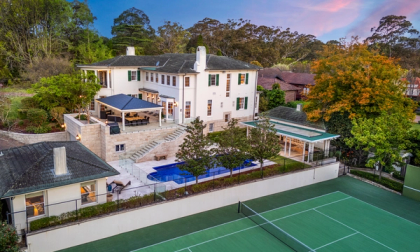
Is the Lower North Shore property market softening and what lies ahead?
Sydney’s Lower North Shore is especially lovely this time of year, and as you wander around our suburbs, it’s easy to understand why property in our area is still in so much in demand. However, with so much talk about the Sydney property market heading into a downturn, many people are wondering how our local market will respond to the challenges ahead. Are we also heading towards falling prices, or will we remain insulated against a sudden downturn?
Let’s look at the Sydney market, our current local market data, and some of the challenges facing us this year and discuss whether they could affect property on the Lower North Shore.
What is happening across wider Sydney?
Looking at Sydney as a whole, housing market conditions appear to be stabilising. Recent data on dwelling values from CoreLogic show that last year’s meteoric rise in property values has slowed significantly in the first quarter of 2022 to 0.6%. It also shows that Sydney values suffered a slight drop over the same period to -0.5%, a definite softening in relation to 2021, which saw a peak of 9.3% over the three months to May 2021.
However, although the Sydney property market appears to be coming off the boil, many experts actually think that we could be entering a period of less rambunctious and more sustainable capital gain. In fact, Dr Andrew Wilson, Chief Economist at My Housing Market, has said that he believes Sydney house prices are likely to rise by over 5% in 2022 before dipping in 2023. A sentiment echoed by the big four banks, with predictions that property values in 2022 will lift between 4.9% and 8% before a correction in 2023.
However, not all of Sydney will perform in the same way. Property investment adviser Michael Yardney believes that the inner- and middle-ring suburbs like the Lower North Shore are expected to continue to perform well in 2022, and are likely to perform better than the less expensive outer suburbs, where climbing prices are beginning to make affordability an issue for residents in these areas, who have seen minimum wage growth.
What is happening on the Lower North Shore?
While it’s too early for detailed analysis following the recent interest rate rise, some recent high-profile sales in suburbs like Mosman suggest that our local market is very much alive and kicking, with well-located houses and friendly apartments still in high demand.
As reported by Lucy Macken in the Sydney Morning Herald last month, there was a huge demand for luxury housing in Mosman in the early part of 2022, with prices of over $10 million becoming almost commonplace.
According to Tim Lawless, CoreLogic , advertised stock levels throughout Sydney were up 6.3% in March, which is higher than last year but still 4.7% below the previous 5-year average.
While this might contribute to a slowing of the market in areas such as the outer-ring suburbs of Sydney, the Lower North Shore property market is still tipped in favour of sellers as buyer demand remains high. With buyers still highly motivated, sales volumes remain pretty much on par with 2021 for the same period.
What are the challenges facing the Lower North Shore market?
The softening in our markets is attributable to several factors. Worsening affordability, combined with the threat of interest rate rises and a shift in the supply-demand balance, has certainly contributed to a slight cooling of the market and may continue to do so in the coming months.
Changes in household finances as we emerge from our COVID cocoons will also play a role as the trends towards saving that emerged in lockdown slip back into pre-COVID spending habits.
Political uncertainty always affects consumer confidence, which in turn has a direct effect on housing market activity. The imminent federal election and the geopolitical unrest in Ukraine could be contributing to this general loss of momentum.
Are there any mitigating factors?
The short answer is yes. In fact, there are quite a few, especially in prestige areas like the Lower North Shore, where demand is likely to remain high and supply relatively low.
Australia’s economy is strong. We have a low unemployment rate, and wages are set to rise in the coming months. In addition, the government has implemented a new round of buyer incentives to help stimulate the market.
Furthermore, despite the recent interest rate rise, mortgage distress is likely to be minimised due to the serviceability assessment that lenders are required to make before approving a loan. In addition, many borrowers are ahead in their mortgage payments, with the average buffer coming in at 21 months.
Finally, our national and international borders have reopened. While this might not have an immediate impact on buyer demand, it will almost certainly lead to an upturn in rental demand in the short-term, with demand for purchases increasing in the mid- to long-term as newly arrived residents start looking for their forever homes.
How does this affect properties on the Lower North Shore?
Our suburbs are still in very high demand. Our proximity to the CBD, the harbour, bush trails, and excellent schools make the LNS a much sought-after area for buyers and investors alike.
In addition, many people who suffered through COVID lockdown in high-density areas are desperate to move to the larger homes and larger blocks of land that make up a large portion of our property stock.
To top it all off, once people buy here, they like to stay here, so supply in our suburbs tends to be lower than demand, ensuring that the balance remains tipped in favour of sellers. Experts suggest that this trend is unlikely to change suddenly in our area.
Looking ahead
There is little question that the wider Sydney market will slow over the coming months. But slowing doesn’t mean stopping, and it certainly doesn’t mean crashing. In fact, most analysts agree that property values in the Lower North Shore are expected to achieve steady, sustainable growth throughout 2022.
So, although we are starting to see a softening of the market, with prices easing in many parts of Sydney, our own area is likely to continue to perform relatively well as demand continues to outstrip supply and a flourishing economy bolsters buyer confidence.
Other Lower North Shore articles and resources
Lower North Shore selling a property guide
Lower North Shore styling to sell checklist
2022 Mosman property market forecast
Selling off market in Mosman and how to get a great result
Property investing in NSW eBook
Sources
https://www.corelogic.com.au/__data/assets/pdf_file/0027/9666/CoreLogic-home-value-index-May-2022-FINAL.pdf
https://propertyupdate.com.au/property-predictions-for-2022-revealed/#what8217s-ahead-for-property-values-in-2022
https://www.youtube.com/watch?v=yEAiPnenH6Q
https://www.realestate.com.au/insights/proptrack-housing-market-indicators-report-march-2022/
Was this content helpful to you?





